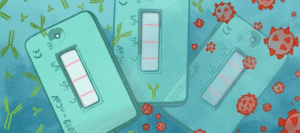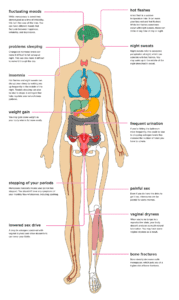Pimply Rash on Buttocks
Understanding Buttock Rashes
A rash on the buttocks can stem from various causes, ranging from minor irritations to infections. This condition might arise due to tight clothing, prolonged sitting, or activities like cycling that cause friction. Other triggers include allergic reactions, chemical irritants, or infections caused by bacteria, fungi, or viruses. While over-the-counter (OTC) remedies and home treatments can often alleviate symptoms like itching or discomfort, persistent or severe cases may require consultation with a healthcare professional, such as a dermatologist, for specialized treatment.
Characteristics of a Buttock Rash
Buttock rashes can manifest in diverse forms, each with distinct appearances and sensations. They may present as small bumps, fluid-filled blisters, raised welts, open sores, or dry, scaly patches. These rashes can be localized or widespread, and symptoms may include itching, pain, warmth, or a prickling sensation. In some cases, the rash may be asymptomatic. The specific features of the rash can provide important clues about its underlying cause. Common types include:
-
Macules: Flat, small spots less than 1 cm in diameter.
-
Patches: Larger flat spots exceeding 1 cm.
-
Papules: Raised bumps smaller than 1 cm.
-
Plaques: Raised or flat lesions larger than 1 cm, differing in texture from surrounding skin.
-
Nodules: Firm, deeper bumps extending into lower skin layers.
-
Vesicles: Small, clear, fluid-filled blisters under 1 cm.
-
Bullae: Larger fluid-filled blisters over 1 cm.
-
Pustules: Blisters containing pus.
-
Urticaria (Hives): Raised welts with defined edges.
-
Ulcers: Open sores penetrating deeper skin layers.
Note: Some images of rashes may be unsettling. Viewer discretion is advised.
Common Causes of Buttock Rashes
While skin irritation is the leading cause of buttock rashes, other factors, such as infections or immune responses, can also contribute. Below are the most frequent culprits:
Contact Dermatitis
Contact dermatitis occurs when the skin reacts to an irritant or allergen. Irritant contact dermatitis results from exposure to substances like soaps, shower gels, lotions, laundry detergents, or new clothing. Allergic contact dermatitis is triggered by allergens, with common ones including fragrances or metals like nickel. Symptoms often include redness, discoloration, itching, or a burning sensation. Scratching can worsen the condition.
To manage contact dermatitis:
-
Identify and avoid the irritant or allergen.
-
Apply a cool compress or take an oatmeal bath to soothe the skin.
-
Use OTC hydrocortisone cream to reduce inflammation and itching.
Image Warning: Some visuals may be disturbing. Reproduced with permission from © DermNet and © Raimo Suhonen, dermnetnz.org, 2023.
Eczema (Atopic Dermatitis)
Eczema, or atopic dermatitis, is a chronic inflammatory skin condition characterized by red, itchy, or discolored rashes. It may also cause cracked skin that leaks clear fluid. Eczema is influenced by genetic and environmental factors and is more common in individuals with a history of hay fever or asthma. It is not contagious.
Management includes:
-
Avoiding known irritants.
-
Using moisturizers to hydrate the skin.
-
Applying topical steroids as prescribed.
-
Using cool compresses or hydrocortisone cream for symptom relief.
Image Warning: Some visuals may be disturbing. Reproduced with permission from © DermNet New Zealand and © Dr. Richard Ashton, 2023.
Yeast Infection (Candidiasis)
Yeast infections occur when the fungus Candida overgrows, often in warm, moist areas like the buttocks, groin, or inner thighs. This overgrowth, known as candidiasis, thrives in skin folds or near the anus, where heat and moisture create an ideal environment. Approximately 40% of anal itching cases may be linked to yeast infections. Symptoms include skin discoloration and intense itching.
Treatment options:
-
OTC antifungal creams or ointments for mild cases.
-
Prescription topical or oral antifungals for severe infections.
Image Warning: Some visuals may be disturbing. Reproduced with permission from © DermNet NZ and © Waikato District Health Board, 2022.
Folliculitis (Butt Acne)
Folliculitis is an infection of the hair follicles, often resembling acne. It appears as pimple-like sores and is typically not itchy. Triggers include shaving, friction from tight clothing, or prolonged exposure to warm, moist conditions, such as sitting in a hot tub. Folliculitis often resolves on its own but can be managed by:
-
Applying warm compresses to reduce discomfort.
-
Avoiding shaving the affected area for at least one month.
-
Wearing loose clothing to minimize friction.
-
Using a moisturizing shaving cream and shaving with the grain to prevent recurrence.
Image Warning: Some visuals may be disturbing. Reproduced with permission from © DermNet, dermnetnz.org, 2023.
Ringworm (Tinea Cruris)
Ringworm, caused by the fungus tinea cruris, is another common fungal infection, also known as jock itch. It thrives in warm, moist environments, making the groin and buttocks susceptible. The rash typically appears red or discolored, raised, and ring-shaped, accompanied by itching and discomfort. Ringworm is more prevalent in hot, humid conditions.
Management includes:
-
OTC antifungal creams for mild cases.
-
Keeping the area clean and dry to prevent recurrence.
Image Warning: Some visuals may be disturbing. Reproduced with permission from © DermNet NZ and © Raimo Suhonen, 2022.
Heat Rash (Miliaria)
Heat rash develops after prolonged exposure to heat and humidity, often following outdoor activities in warm weather. It occurs when sweat becomes trapped in the skin, causing small, itchy bumps or redness. To manage heat rash:
-
Keep the area cool and dry.
-
Wear loose, breathable clothing.
-
Avoid heavy creams or ointments that may clog pores.
When to Seek Medical Attention
While many buttock rashes can be treated at home, consult a healthcare provider if:
-
The rash persists or worsens despite treatment.
-
Symptoms include severe pain, swelling, or fever.
-
The rash spreads rapidly or develops open sores.
-
There is uncertainty about the cause or appropriate treatment.
A dermatologist may prescribe stronger medications, such as oral antibiotics, antifungals, or corticosteroids, to address underlying issues.
💡 Frequently Asked Questions
⭐ Expert Tips
- Include seasonal or trendy variations to keep your meals exciting.
- Highlight prep shortcuts or time-saving techniques for busy cooks.
- Consider dietary restrictions and include substitution suggestions.
✅ Key Takeaways
- These dinner ideas are perfect for impressing guests or enjoying special occasions.
- Choose recipes that match your skill level and available kitchen tools.
- Presentation and taste both contribute to a memorable dining experience.
📣 Join Our Community
Want more inspiration like this? Subscribe to our newsletter for weekly dinner ideas and cooking tips!



